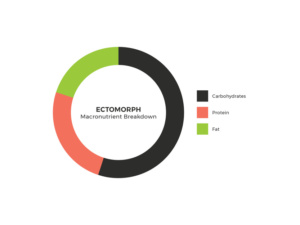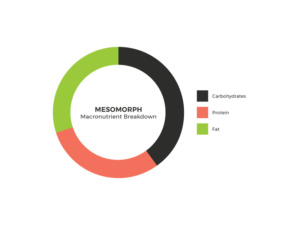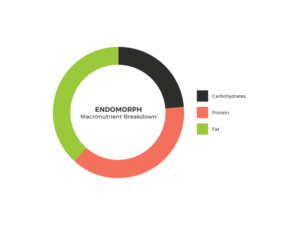The science of fitness is incredible. Take the time to read about your body type from the ISSA Website.
Three major body types were developed in the 1940s by an American psychologist. They were created to help categorize the human physique. The belief is that people are born with an inherited body type. This type is based on their skeletal frame and body composition. Since the designation of the three body types, physiologists, nutritionists, trainers, and doctors have used them to help design effective individualized fitness programs.
The Three Body Types
The three body types most people fall into are ectomorph, mesomorph, and endomorph. The idea in understanding each of the body types is that you are better able to tailor individualized plans to achieve goals and reach full-body potential. Understanding your body type can help you know how to train for your specific body type.
It can also aid in developing a nutritional plan to support your body composition goals. Body type can give clues about your metabolism and hormones. In essence, how your body processes the nutrients you consume. Let’s dig into the characteristics of each body type and their specific nutritional needs.
Ectomorph Body Type
Ectomorphs tend to be thin, long, and lanky with relatively low body fat and low body weight. They typically have a smaller bone structure. Their shoulders are usually narrower than their hips. Ectomorphs typically do not put on muscle or body weight easily. It usually takes a lot for the number on the scale to move.
Ectomorphs are generally thyroid dominant. This means they have a higher basal metabolic rate (BMR). An individual’s BMR is indicative of how much energy they burn at rest. A high BMR is indicative of a fast metabolism. This means ectomorphs burn calories very quickly. This can lead to them finding themselves frequently hungry throughout the day.
Ectomorph Macronutrient Profile
Due to their higher BMR and overall capacity to burn calories quickly and efficiently, ectomorphs typically have a higher carb tolerance. When nutrition planning for ectomorphs, one should think higher carbohydrate intake, fewer fats. Macronutrient breakdown for ectomorphs should be predominantly carbohydrates. Lean protein and fat should be split almost evenly for the remaining calories. The number of calories will differ from person to person and is dependent on many factors. There are many calculators out there that can help calculate daily caloric requirements. If your ectomorph clients are training for endurance or muscle gains, they should consider consuming most of their carbohydrates following their workout.
 Ectomorphs typically do not fare well on high-fat diets. This is because their fast metabolisms crave carbohydrates. However, the type of carbohydrates consumed is of importance. Ectomorphs should stick to complex carbohydrates. This will leave them feeling fuller longer.
Ectomorphs typically do not fare well on high-fat diets. This is because their fast metabolisms crave carbohydrates. However, the type of carbohydrates consumed is of importance. Ectomorphs should stick to complex carbohydrates. This will leave them feeling fuller longer.
They should also avoid highly processed carbohydrate foods like chips and candy. Such foods will break down very quickly. This leads to hunger pains shortly after consumption and then overconsumption of excess calories. For ectomorphs, this can result in a “skinny fat” physique. This term describes individuals that look relatively thin from the outside but carry a lot of visceral fat internally. Visceral fat consists of fat cells that pack around the organs of the body. Increased visceral fat leads to increased risk of cardiovascular issues as well as other metabolic conditions. Ectomorphs will fair best when sticking to whole, unrefined carbohydrates accompanied by moderate protein and healthy fats.
Mesomorph Body Type
Mesomorphs tend to be more muscle-dominant individuals. They usually display an hourglass figure with a medium build frame. These individuals are genetically predisposed to build muscle mass. Weight loss and weight gain typically occur quickly in response to dietary and workout modifications.
Mesomorph Macronutrient Profile
 Because mesomorphs are predisposed to building muscle mass, they require a slightly higher calorie intake. The muscles they are building during a workout require more calories to sustain. Mesomorphs typically require the most protein intake of all three body types.
Because mesomorphs are predisposed to building muscle mass, they require a slightly higher calorie intake. The muscles they are building during a workout require more calories to sustain. Mesomorphs typically require the most protein intake of all three body types.
Mesomorph macronutrient profiles should include a variety of fats, complex carbs, and proteins. These individuals typically perform and feel their best with a balance between all macronutrients. Mesomorphs should consume fast-digesting carb-dense foods or drinks during weight training to support building lean muscle mass.
Mesomorphs should watch out for foods notorious for hidden sugars. Foods like yogurts, sauces, instant oatmeal, and non-natural peanut butters. Even peanut butters with “natural” on the label should be checked. Often, they sneak in added sugars but can still label it as “natural”. The best way to avoid added sugars is to read the nutrition facts label.
Endomorph Body Type
Endomorphs typically have a predominance of carrying more body fat through various regions of the body. They are typically thought of as curvaceous women or stocky men. The endomorphic body tends to carry weight around the belly and the lower body. Most predominantly in the hips and thighs.
Endomorph Macronutrient Profile
Those with an endomorph body type have a lower tolerance to carbs compared to both mesomorphs and ectomorphs. Endomorphs are good at converting carbohydrates into sugar and storing them as fat. Because of this, they may be more prone to insulin resistance than the other body types. Increased carbohydrate sensitivity puts endomorphs are at highest risk for developing diabetes. Endomorphs should eat an even distribution of protein, healthy fats, and carbohydrates.
 Carbohydrates for endomorphs should come mostly from vegetables and whole grains. All foods rich in carbohydrates are best consumed during or after a workout for endomorphs. This will help to maximize muscle-building potential without increasing fat gain.
Carbohydrates for endomorphs should come mostly from vegetables and whole grains. All foods rich in carbohydrates are best consumed during or after a workout for endomorphs. This will help to maximize muscle-building potential without increasing fat gain.
Endomorphs should prioritize fats and protein, keeping carbohydrates on the lower end of the equation. Those with this body type should forgo the old advice that eating fat will make you fat. On the contrary. Ketogenic or low-carb diets are a great option for endomorphs. Monounsaturated and omega-3 fats can help endomorphs feel fuller longer. This can lead to eating less, thereby helping them trim unwanted body fat. In addition, fat has minimal effect on insulin levels and therefore results in less blood sugar spikes. This can help to reduce the overall risk of diabetes.
Endomorphs should cut back on their carb intake and focus more on healthy proteins and fats. However, this does not mean they must nix all carbohydrates. Endomorph’s carbs should come from mostly vegetables and whole-grain foods. Limit breads, beverages, pastas, junk food, and high-sugar fruits. These foods will be digested very quickly and lead to blood sugar spikes.
Which Body Type is Best?
Each of the three body types has strengths and weaknesses. Not one of these body types is better than the other. It’s important to note that individuals rarely fall under the true definition of one of these body types. Typically, people are a hybrid between two types, and sometimes even three. Individuals can exhibit unique characteristics from each of the different body types. This is why there is no cut and dry program to getting results. It will take time and experimenting to find what works best for each body.
Know your body type and address your specific concern. There are no cookie cutter diets! Start working on your diet today!
